Sphinx gordius
Cramer, 1779
Apple Sphinx Moth
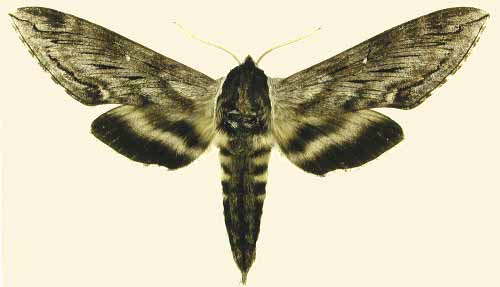
Sphinx gordius
"should be poecila"
courtesy of Natural Resources, Canada.
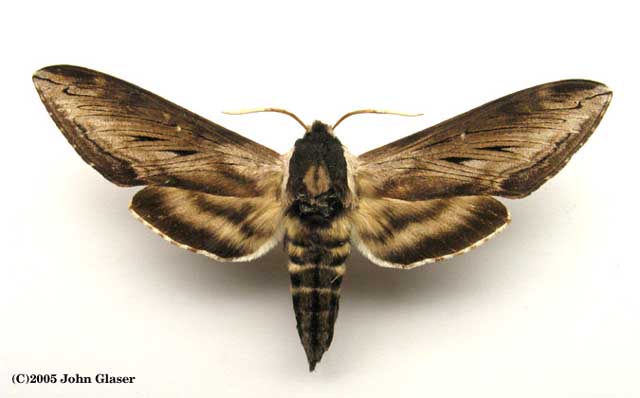
Sphinx gordius, Glades, Garrett County, Maryland,
courtesy/copyright John Glaser
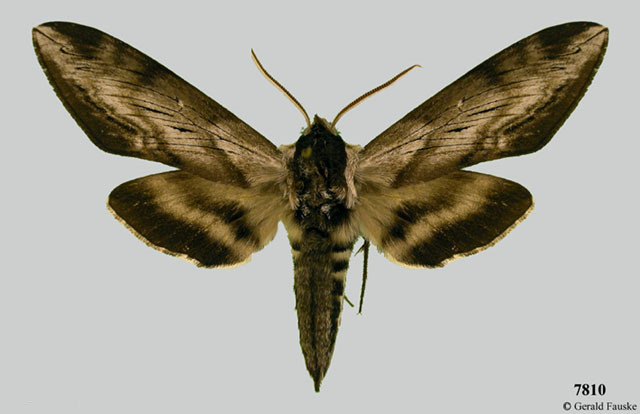
Sphinx gordius, Ransom County, North Dakota,
July 18, 1993, courtesy of
Gerald Fauskes.
This site has been created by
Bill Oehlke at oehlkew@islandtelecom.com
Comments, suggestions and/or additional information are welcomed by Bill.
TAXONOMY:
Family: Sphingidae, Latreille, 1802
Subfamily: Sphinginae, Latreille, 1802
Tribe: Sphingini, Latreille, 1802
Genus: Sphinx Linnaeus, 1758 ...........
Species: gordius Cramer, [1780]
|
MIDI MUSIC
.....It's a Wonderful World.....
copyright C. Odenkirk
ON.OFF
<bgsound src="world.mid" LOOP=FOREVER>
|
DISTRIBUTION:
The Apple Sphinx Moth, Sphinx gordius
(Wing span: 2 11/16 - 4 1/4 inches (6.8 - 10.8 cm)),
flies in coastal barrens, bogs, and deciduous forests from southeastern New York and New Jersey south to central
Florida; west through southern Illinois, Colorado, and Utah; north
through the Rocky Mountains to Saskatchewan and Manitoba.
Virginia is the specimen type locality.
I beleive that all of the images that I originally
posted to this page, i.e., prior to revision of May 17, 2008, are
probably those of Sphinx poecila.
S. gordius and
S. poecila are quite similar, and at one time, Sphinx poecila
was classified as a subspecies of S. gordius.
Based on a recent search for images after reading Jim Tuttle's excellent
book, The Hawk Moths of North America, I have posted images from
John Glaser, Maryland; Gerald Fauskes, North Dakota; and
Jo Ann Poe-McGavin, Pennsylvania, that I believe are true S. gordius,
based on Jim Tuttle's images and description.
I have left the original, incorrectly labelled images
(now marked "should be poecila") on this page for comparison purposes.
Colouration and markings are highly variable from one specimen to
another. The fringes on forewing are mostly
black with some white; those on the hindwing are mostly white with a
few black patches. The upperside of the
forewing ranges from brown with black borders through brownish gray with paler borders to pale gray with no borders.
Dashes, submarginal line, and cell spot are usually weak. The upperside of the hindwing is gray to yellow-gray
with a black border and a black median line which ranges from
distinct to diffuse. Image courtesy of John Himmelman,
June 28, 2002, Connecticut. "should be
poecila" ?? | 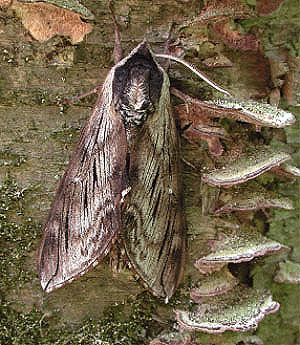
|
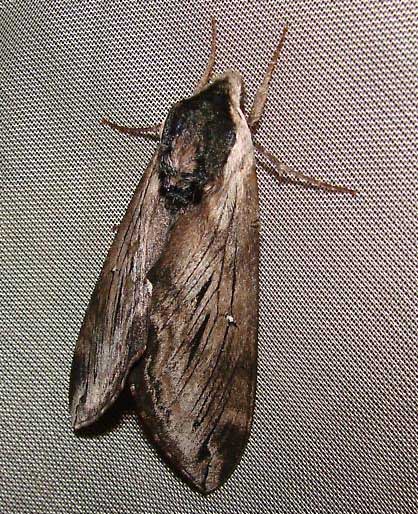
Sphinx gordius, Jim Thorpe, Carbon County, Pennsylvania,
May 26, 2007, courtesy of Jo Ann Poe-McGavin.
It can be quite difficult to distinguish between Sphinx gordius
and Sphinx poecila.
S. poecila is generally a more northerly
species, but there are populations of both species in Vermont, New Hampshire,
Massachusetts, Connecticut, New York, Michigan, Wisconsin, Minnesota,
southern Ontario, Manitoba and Saskatchewan.
James P. Tuttle in his The Hawk Moths of
North America writes, "The most reliable distinguishing character
is on the outside of the postmedial band in the submarginal area of
the dorsal forewing.
In gordius this submarginal area is very dark, often black,
and sharply contrasts with the grayish ground color of the rest of the
forewing. Except for the occasional presence of a suffusion of
dark scales at the anal angle, there is no such contrasting dark maculation in
poecila; this submarginal area maintains the same ground color as the rest of the
forewing."
Characters that also seem to be consistent to me are listed below:
1g) very dark forewing fringe along the outer margin in gordius
1p) more evenly checkered black and white fringe in poecila
2g) hindwing fringe with some black or darker colouration in gordius
2p) hindwing fringe that is almost all pure white in peocila
3g) distinct dark patch along the costa near the forewing apex in
gordius
3p) more diffuse dark patch along the costa near the forewing apex in
poecila
4g) a vestigial median band, meeting the inner margin closer to the
pm line in gordius when compared to poecila
4p) a diffuse median band, meeting the inner margin about half
way between the am and pm lines in poecila.
FLIGHT TIMES:
Sphinx gordius adults fly as a
single brood from May-September in most of the
range, from February-April in Florida.
ECLOSION:
Pupae probably wiggle to surface from
subterranean chambers just prior to eclosion.
SCENTING AND MATING:
Females call in the
males with a pheromone released from a gland at the tip of the
abdomen. Adults nectar at deep-throated flowers including
including dogbane (Apocynum), honeysuckle
(Lonicera), lilac (Syringa), evening primrose
(Onagraceae), bouncing bet
(Saponaria officinalis), and phlox (Phlox).
Image to right "should be poecila".
| 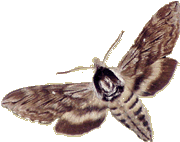 |
EGGS, LARVAE, PUPAE:
Larval hosts are
apple (Malus), sweetfern (Myrica), Carolina rose
(Rosa carolina), blueberry and huckleberry (Vaccinium),
white spruce (Picea glauca),
American larch (Larix laricina), and alder (Alnus).
| 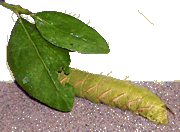 |
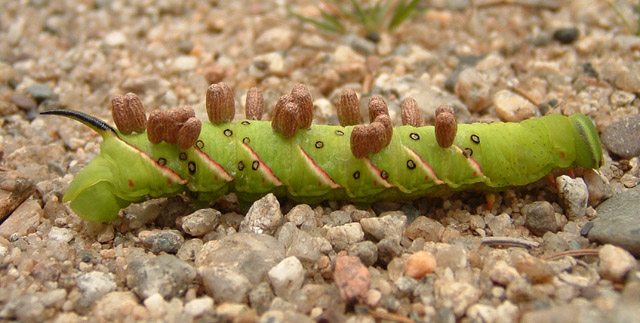
Sphinx gordius "should be peocila"
(Sept 1, 2003), heavily parasitized,
Musquodoboit Trail, near
Halifax, Nova Scotia, courtesy of Patrick Turner.
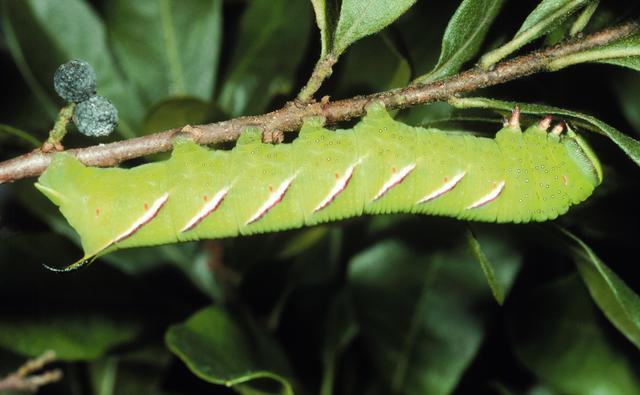
Sphinx gordius courtesy/copyright
David Wagner.
Return to Sphingidae Index
Return to Sphingini Tribe








